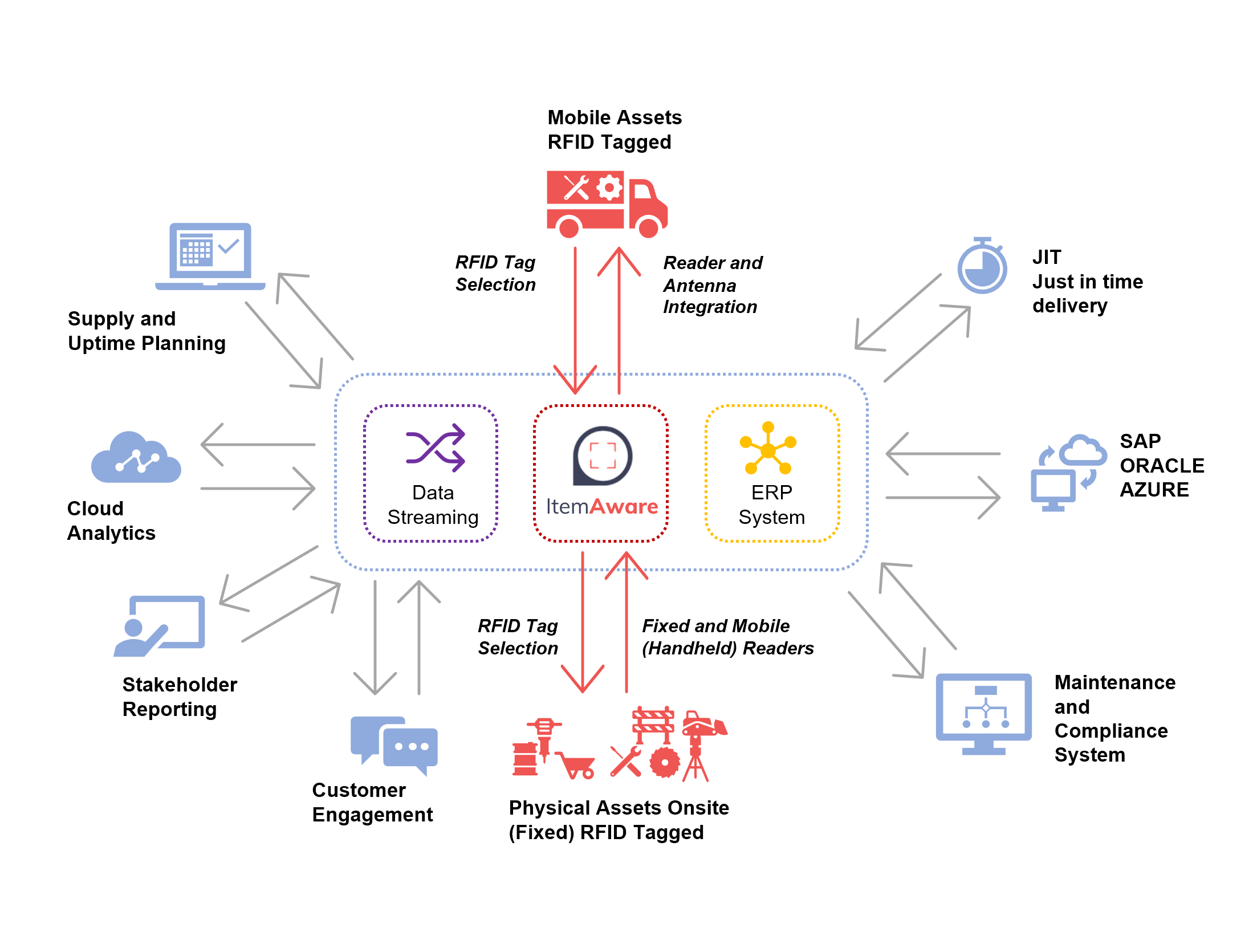Navigating the Complex Terrain of Asset, Equipment and Inventory Management in Infrastructure and Construction
Main image courtesy of Aware Innovations website.
In the dynamic realms of infrastructure and construction, effective asset and inventory management stands as a cornerstone of operational efficiency and project success.
These sectors face a unique set of challenges that, if not addressed adeptly, can lead to significant disruptions, inflated costs, and delayed project timelines.
This article delves into the most common challenges encountered in asset and inventory management within these industries, offering insights into overcoming these hurdles to achieve optimal outcomes using automatic data capture and specifically RFID.
1. Complexity of Tracking and Managing Diverse Assets
Infrastructure and construction projects typically involve a vast array of assets, from heavy machinery and equipment to small tools and materials. Each asset category demands distinct management strategies, complicating the tracking process. The sheer diversity and volume of these assets necessitate sophisticated management systems that can handle multifaceted tracking requirements, ensuring that the right assets are in the right place at the right time.
RFID as a technology is now used by the world's largest Retailers and tag design and selection is a critical element of a successful program exemplified through Walmart’s adoption of RFID across the majority of their inventory.
There are literally billions of RFID tags used by Retailers for inventory management every year, it is an efficient, highly accurate and affordable solution.
Solution:
Leveraging advanced asset management software (link to https://www.4impact.com/aware-innovations-item-aware) that offers real-time tracking capabilities and integrates with RFID (Radio-Frequency Identification) or barcode scanning can streamline the management process. These technologies enable precise tracking of asset movement and usage, facilitating efficient allocation and reducing downtime.
In vehicle inventory management using RFID has traditionally proven to be a difficult and almost unachievable application but an American company, Aware Innovations, has solved this through the effective honing of the RFID components of software, readers, antennas and tags.
Now mobile assets and inventory can be accurately tracked using RFID on board enabling absolute transparency to the items on board.
2. Inventory Visibility and Accuracy Issues
Accurate inventory management is critical in avoiding project delays and cost overruns not to mention loss and theft prevention. However, maintaining inventory accuracy is challenging due to manual tracking errors, theft, loss, and damage. Inadequate visibility into inventory levels can result in overstocking or stockouts, both of which are costly to the project.
Solution:
Implementing an integrated inventory management system that provides real-time visibility into stock levels and automates reorder points can significantly improve accuracy and efficiency. Such systems can also offer insights into inventory trends, helping to forecast demand more accurately and adjust inventory levels accordingly.
3. Regulatory Compliance and Safety Standards
Infrastructure and construction industries are heavily regulated, with stringent requirements for asset maintenance, safety, and compliance. Ensuring that all assets meet these standards can be overwhelming, especially for large-scale projects with extensive equipment inventories.
Solution:
Adopting comprehensive asset management solutions that include maintenance scheduling, safety checks, and compliance tracking can help simplify regulatory adherence. These systems can automate reminders for maintenance and inspections, ensuring that all assets remain in compliance with industry regulations.
4. Cost Control and Budget Management
Effective cost control is vital in infrastructure and construction projects, where budgets are often tight and financial stakes are high. Asset and inventory mismanagement can lead to unnecessary expenditures on equipment repairs, replacements, and inventory holding costs.
Solution:
Cost control can be enhanced by implementing asset lifecycle management practices, which focus on optimising the usage and maintenance of assets to extend their lifespan and reduce total ownership costs. Additionally, inventory optimisation techniques, such as just-in-time (JIT) inventory practices, can reduce holding costs and minimise waste.
5. Environmental Sustainability and Asset Disposal
With increasing focus on environmental sustainability, managing the disposal and recycling of assets and materials has become a significant challenge. Properly disposing of assets in an environmentally responsible manner is not only a regulatory requirement but also a corporate responsibility.
Indeed the lifecycle traceability, and provenance of an item through to end of life can be supported through technology as can the tying of critical data such as carbon footprint calculation etc.
Solution:
Developing a sustainable asset management strategy that includes eco-friendly disposal and recycling practices can address this challenge. Partnering with recycling firms and adopting green procurement policies can also contribute to a more sustainable approach to asset and inventory management. 
Protect your business from equipment loss, theft, and downtime with ItemAware.
The challenges of asset and inventory management in the infrastructure and construction sectors are considerable but not insurmountable. By embracing technological advancements, adopting best practices in asset lifecycle and inventory management, and prioritising sustainability, organisations can overcome these obstacles.
The key lies in recognising the complexity of the challenge and systematically addressing each issue with strategic solutions, thereby paving the way for enhanced efficiency, cost savings, and project success in these critical industries.
To find out how 4impact, utlising ItemAware can help you navigate the complexities of asset management, let’s chat.
